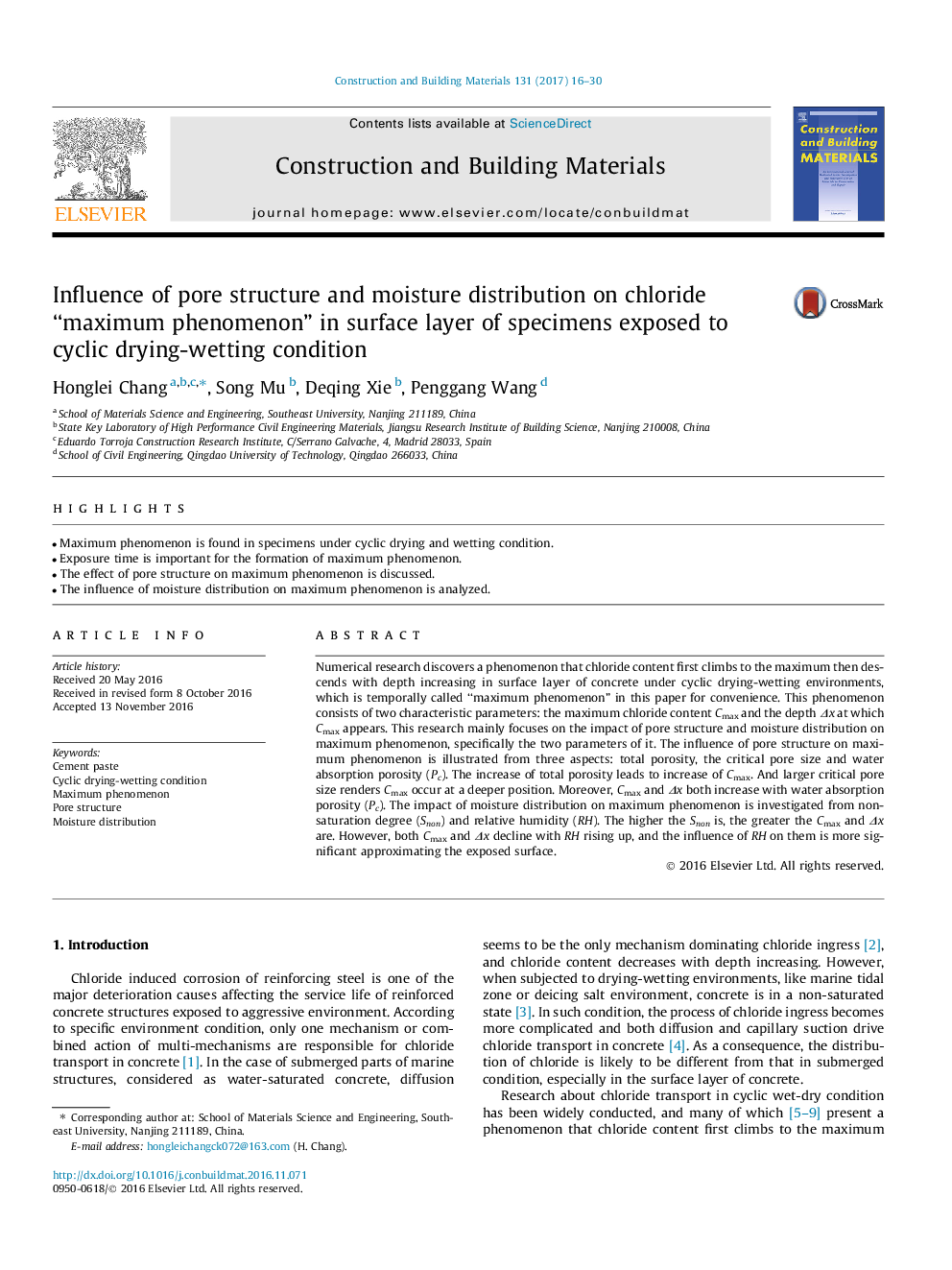| Article ID | Journal | Published Year | Pages | File Type |
|---|---|---|---|---|
| 4913613 | Construction and Building Materials | 2017 | 15 Pages |
Abstract
Numerical research discovers a phenomenon that chloride content first climbs to the maximum then descends with depth increasing in surface layer of concrete under cyclic drying-wetting environments, which is temporally called “maximum phenomenon” in this paper for convenience. This phenomenon consists of two characteristic parameters: the maximum chloride content Cmax and the depth Îx at which Cmax appears. This research mainly focuses on the impact of pore structure and moisture distribution on maximum phenomenon, specifically the two parameters of it. The influence of pore structure on maximum phenomenon is illustrated from three aspects: total porosity, the critical pore size and water absorption porosity (Pc). The increase of total porosity leads to increase of Cmax. And larger critical pore size renders Cmax occur at a deeper position. Moreover, Cmax and Îx both increase with water absorption porosity (Pc). The impact of moisture distribution on maximum phenomenon is investigated from non-saturation degree (Snon) and relative humidity (RH). The higher the Snon is, the greater the Cmax and Îx are. However, both Cmax and Îx decline with RH rising up, and the influence of RH on them is more significant approximating the exposed surface.
Related Topics
Physical Sciences and Engineering
Engineering
Civil and Structural Engineering
Authors
Honglei Chang, Song Mu, Deqing Xie, Penggang Wang,
